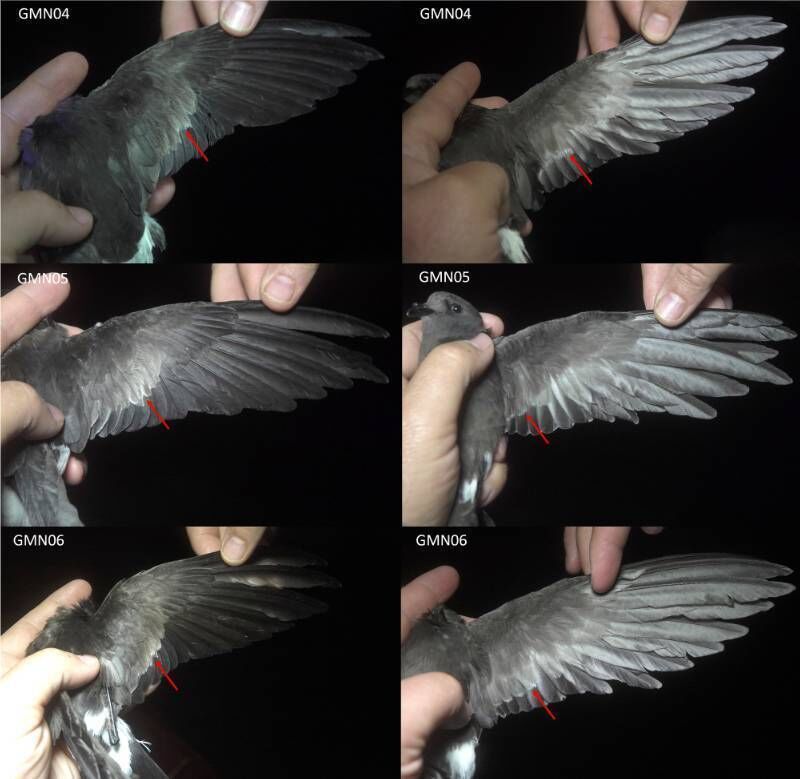Richard Collins: New species of storm petrel discovered

Oceanites barrosi — new species — (Andean Storm Petrel) captured by Rodrigo Barros in Río Blanco, Los Andes province, Valparaíso Region, Chile
A thousand miles from land are we, Tossing about on the roaring sea — by Bryan Waller Procter
When tiny seabirds began following their ship, sailors knew that a storm was coming. ‘Mater cara (dear Mother)’ they prayed and the little birds became ‘Mother Carey’s chickens’. Now there’s another ’chicken’ for her to protect... a previously unknown species, the ‘Andean storm petrel’, has been discovered in South America.
Storm petrels, black plumaged with gleaming white rumps, resemble house martins in flight, as they work the troughs between waves sheltering them from the wind. The bulging forehead suggests a big brain and the tubular nose houses desalination organs. Petrels have an acute sense of smell.
This is the Andean Storm-Petrel (Oceanites barrosi) which is a NEW species we have just described in a paper in Zootaxa. We also suggest a re-arrangement of the taxonomy in the group, suggesting multiple splits. https://t.co/z1XeQMFEFn pic.twitter.com/akEHcVCO4G
— Alvaro's Adventures (@AlvaroAdventure) July 30, 2024
Keeping well out to sea, our smallest ocean wanderer is seldom seen from shore, except during gales. The late Robert Ruttledge noted that ‘severe storms in autumn cause ‘wrecks’; the victims are then often found strewn all over the country'.
Feeding on plankton small fish and offal from ships, ’stormies’ dangle their feet, seeming to patter along the water surface, giving us the name ‘petrel’, the bird of St Peter who tried walking on water (Matthew gospel).
Self-effacing and secretive, storm petrels breed colonially in burrows and holes in stone walls, on remote islands. Parents take turns incubating the single egg, entering or leaving the nest under cloak of darkness. A characteristic smell is the only sign of their presence during daylight. Petrels sing underground and have individual odours to help incoming partners locate the nest. The threat from predators is so great that few come ashore in bright moonlight. Beginning at age four, females lay a single egg each year. Petrel must live for several decades if they are to replace themselves.

Ringing stormies in the dead of night on remote islands off the west coast is a treasured memory. Once, using only a single 12m mist-net on Inishvickillane, six of us had to work flat-out to extract and ring the little petrels, so many were entering the net. Gentle souls, a joy to handle, they don’t tear your net. Nor do they bite or cut with beak and claw the way other seabirds do.
Ireland’s west coast may support the world’s largest colonies of Mother Carey’s chickens. We can only speculate as to the numbers; petrels are almost impossible to census accurately. Inishtooskert, in the Blasket group, has the largest colony surveyed so far.
The newly discovered Andean storm petrel is not a particularly close relative of our two Irish breeding species; the stormies of the southern hemisphere and those of the North Atlantic belong to different genera. But it is just possible that there’s an Irish connection. Wilson’s storm petrel, which breeds in ice-free rock cavities along the coasts of Antarctic islands, is a close relative of the Andean species. This great traveller is recorded in our waters from time to time. Storm petrels are notoriously difficult even for hardened twitchers to tell apart, so Wilson’s may be a more frequent visitor than we think. Does the newly-discovered species visit us also?







